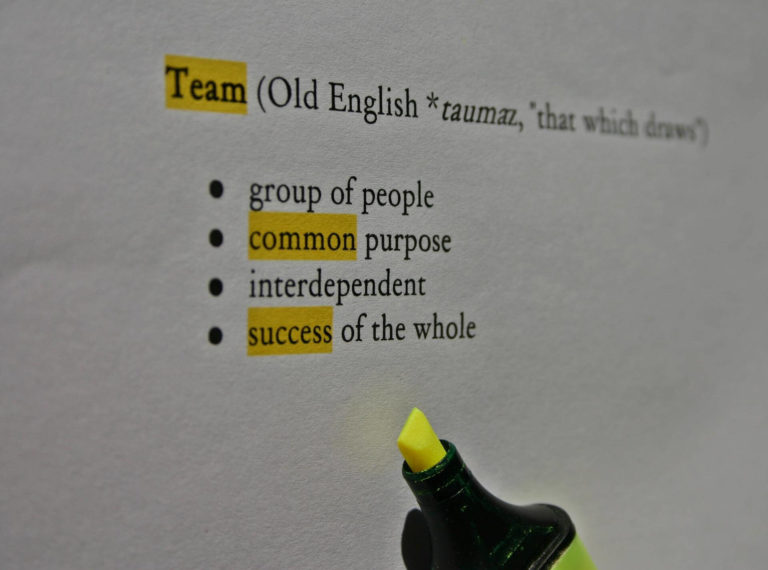Blog:
In other words
What is a style guide?
Many of my first-time clients—mainly students and non-published clients—have never worked with a style guide before, and they ask me:
What is a style guide? Do I really need it? Why is a style guide important?
A style guide provides an overview of the various writing and layout choices. These include decisions on spelling, hyphenations, abbreviations, numbers, capitalizations, application of bold and italic fonts, references, and more.
In the following article, I describe what a style guide is, who uses them, and why I provide one to my editing and proofreading clients.
If you like, you can skip straight to the free style sheet example at the bottom of this article.
What is a style guide?
You’ve probably heard of the various styles used in academic writing and the publishing industry: APA Style, Chicago Manual of Style, and New Hart’s Rules, to name but a few. These are all examples of style guides generated to improve communication and consistency within a single document and across multiple texts.
Style guides provide an overview of the various writing and layout choices, including:
§ Dialect (e.g., American, British, or Australian English)
§ Spelling (e.g., “labelling” or “labeling”)
§ Hyphenations (e.g., “decision-maker” or “decision maker”)
§ Abbreviations (e.g., US or U.S. for United States)
§ Numbers (e.g., numbers up to ten spelled out and numbers above ten in numerals)
§ Capitalizations (e.g., title case or sentence case in headings)
§ Font (font size and use of bold, roman, and italic fonts within the text)
§ References
§ and many more …
In an academic paper, for example, it is crucial to apply a consistent citation style throughout the text. If we use the APA Style, the author name(s) and the publication date of a parenthetical reference are separated by a comma. For example:
“Annual revenue of small businesses decreased by 16% between 2010 and 2016 (Holten et al., 2017).”
In contrast, the Chicago Manual of Style uses no comma between the author and publication date:
“Annual revenue of small businesses decreased by 16% between 2010 and 2016 (Holten et al. 2017).”
As illustrated in the examples above, the differences between the various style can sometimes be very small. However, those details are extremely important and can have a lasting impact on how the document is perceived—and judged—by the reader. Consistency is key.

Why do you need a style guide?
Imagine that you have written a 200-page Ph.D. thesis and now want to make sure that the presentation is consistent.
- Did you use title case or sentence case in your headings?
- Did you write “US” or “U.S.” for United States?
- Which words or terms did you italicize, and which ones did you write in bold font?
- Did you use -ise or -ize endings (e.g., “organize” vs. “organise”) in British English?
For any long text, especially one as voluminous as a Ph.D. dissertation, you will want to have a handy overview that you can refer to as you revise your text.
The academics among you who have already submitted a manuscript to a journal for peer review will know that each journal has its own style, outlined in its so-called author guidelines. The purpose of these guidelines is to have all manuscripts submitted in a particular format and style. These can be very specific or quite general.
For example, one journal may ask that manuscripts submitted for peer review must be written in Times New Roman, in font size 11, double-spaced, contain no more than three subheadings, and cannot be more than 8,000 words in length.
The guidelines often vary between individual journals/publishers. Before you send in your work, make sure to follow their style guide, or else you risk instant rejection by the managing editor.
Whenever I edit or proofread a client’s text, I create a style sheet to make sure that the content is presented in a clear and
consistent manner.
Sometimes my clients will already have a style sheet or guide, whether that’s one they created themselves or a guide provided by the publisher, journal, or institution. In the latter case, I will use it as a basis for the style sheet I create during an edit or a proofread.
Sometimes I have to make a style sheet from scratch because I have not received any particular style instructions. In that case, I work through the client’s document and take note of the style and formatting decisions they have already made (consciously or subconsciously).
If a style is used inconsistently and the client doesn’t have a preferred style, I will choose the one predominantly used in the text.

Regardless of the amount of information I receive at the beginning of a new project in terms of style, I continuously update the style sheet as I work my way through the document.
I create a style guide for two reasons:
- A style guide helps me to keep track of particular style choices you have made throughout your document. This is particularly important in longer documents. For example, if I come across the word “decision-maker” on page 2 in a text, I add it to the word list in the style sheet. Then, if the word reappears on page 182, I can check in the style sheet whether it was previously hyphenated (“decision-maker”) or not (“decision maker”).
- You may end up making additional changes to your text after you have received the edited version from me. The handy style sheet I create for you will help you maintain the same style and not accidentally introduce inconsistency errors.
With a style sheet, neither you nor I have to memorize all those style decisions—which would not be fun!
And since you receive the style sheet as a Word file from me, you are free to adapt it or use it as a template to create your own style guide for your future writing projects.
TAKE-HOME MESSAGE
- Style guides are used by publishers, organizations, and institutions to ensure consistency within and across documents.
- A style guide includes particular spellings, hyphenation, punctuation, capitalization, abbreviation, numbers, and many other decisions.
- Refer to the style sheet I send to you with your completed editing or proofreading order. Use it as you make additional changes to your text to ensure that you do not accidentally introduce inconsistencies in your writing.
- Make sure you follow the style guide and all publisher or institutional instructions before submitting your work. Inconsistencies quickly make the author look sloppy and can lead to rejection.
Now that you know what a style guide is, take a look at your current writing project to see which styles you have applied consistently and which ones you haven’t.
Check out the free style sheet example I have created for you below! You are welcome to use it as a template.

Christina Stinn is a professional translator, proofreader, and editor with a background in ecological research and experience in publishing peer-reviewed articles in academic journals. She is a Professional Member of the Chartered Institute of Editing and Proofreading (CIEP) and has a M.Sc. degree in International Nature Conservation. So far her work has included fiction and non-fiction books, academic journal articles, and marketing materials in English and German. She loves working with clients who strive to bring their writing to the next level and enjoys taking part in their journey. Find out more
YOU MIGHT ALSO LIKE:




